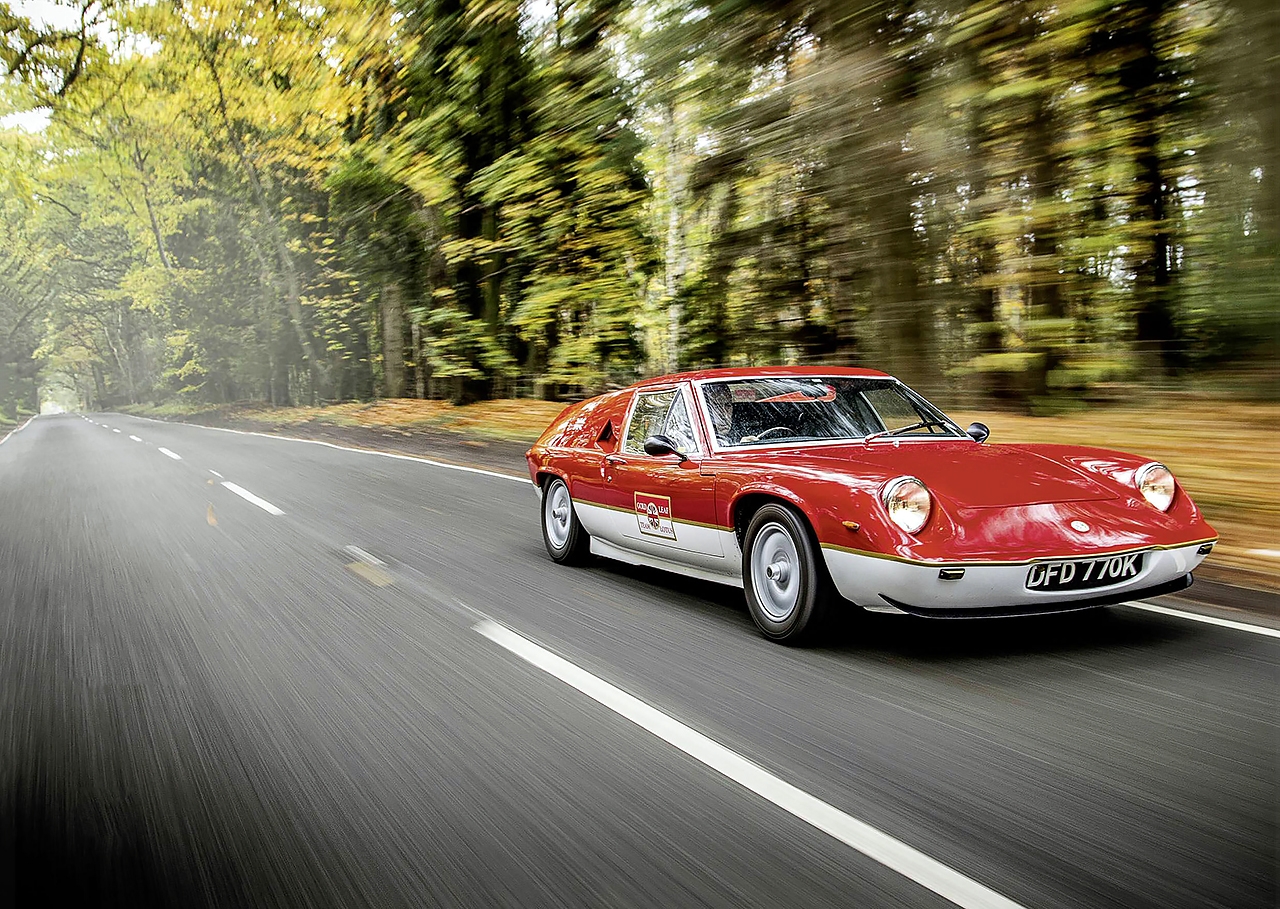
The List Reader Ian Burnett’s first car was a Triumph Stag but he’s always longed to drive a Lotus Europa. How does a tweaked S2 stack up for a man used to driving Formula Ford racers? I’d want to show it off at every opportunity. Ian Burnett loves Formula Ford racers but has always dreamed of driving a Lotus Europa. We get him into the low-slung driver’s seat of a modified twin-carb S2 to see how it measures up. Words Ross Alkureishi. Photography Charlie Magee.
IAN BURNETT HIS WISHLIST
Ian’s first car was a Triumph Stag that he bought when he was 18, followed by a succession of sub- £400 3.0-litre Capris that provided ‘wild fun for no money’. His Audi 100 was ‘100 times better-built than all the above’ and his Metro Turbo ‘underrated by everyone’.
Van Diemen RF80
Lotus 61 Formula Ford
Maserati Merak
Dodge Viper
Mercedes-Benz 500
Lotus Europa
Vanden Plas 4-litre R
Buick Grand National
Chevrolet Corvair
Bentley Continental
‘It thrives on revs – get the power down and its low kerbweight means the 0-60mph sprint takes just over seven seconds’
A quick telephone conversation with Ian Burnett elicits two important facts that result in a distinct shift in emphasis for this month’s drive. He likes power – and lots of it – and he’s quite partial to a modified classic. So the 105bhp Lotus Europa Twin Cam I had lined up in Kent has been jettisoned in favour of a tweaked S2 kicking out an estimated 120bhp. Not a huge jump but one that brings it almost in line with the top of the road-going Europa range – the big-valve Special.
Better still, it’s currently for sale at Greenside Cars – just five miles from his Norfolk home. It has been rebuilt as a Type 47 race car facsimile, complete with Gold Leaf Team Lotus exterior – surely its most striking colour scheme. ‘I saw some photos of it and thought it was a lovely car but that’s just so dramatic, isn’t it?’ says Ian as Greenside’s James Henderson pulls up in it. ‘Truly stunning!’
It was Ian’s love of all things quirky that propelled the Lotus on to his list. He says, ‘I used to watch rallycross on Saturday afternoon Grandstand back in the late Sixties and early Seventies and my love for the Europa started with Paul Kerridge’s green Velvetex-covered car. It stood out a mile in a sea of Minis, Anglias and Escorts and was a regular front-runner. I’ve always loved cars that are quite unlike anything else and that certainly fitted the bill.’
Keys in hand, we open the doors and slide down into the low-set seats. Ian finds that the only way in is to angle his left foot into the corner of the footwell, get his right foot alongside and then slide over into the seat. ‘It sounds like a proper rigmarole,’ he says, ‘but it’s actually a lot easier than it sounds.’ The small cabin – frequently criticised in period for being claustrophobic – doesn’t bother him either. ‘I really like the sporty driving position but I suppose it won’t appeal to everyone.’
Ian feeds the Europa out on to the road and we’re off. After a mile or two of familiarisation he gives his initial impressions. ‘The brakes stand out,’ he says, ‘not so much for their performance but for how difficult it is to find the pedal. But it’s quite civilised, isn’t it? It tracks a bit over bumps but doesn’t crash over potholes at all – it’s much better than I was expecting.’
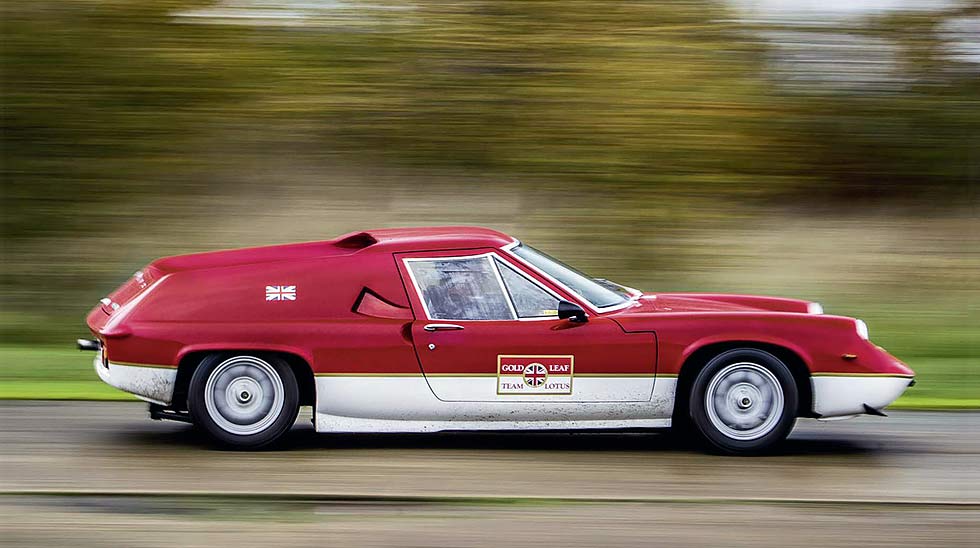
1969 Lotus Europa S2 road test Ian found the Europa’s steering is typically communicative but the rear-engine layout means the nose felt disconcertingly light.
He increases the pace as the road straightens and the twin Weber carburettors let out a strident inlet roar. ‘There’s plenty of drama when you press the pedal but not much initial acceleration,’ he says. ‘It doesn’t feel enormously fast – I get the feeling that it really needs to be over 4000rpm in order to deliver its power. Still, I bet it would never break traction in a straight line, even in the wet.’ We’re about to find out, because the heavens have just opened.
A dashboard fumble eventually locates the windscreen wiper control and we head towards the North Norfolk coast. Ian is pushing the Europa a bit harder now but the semi-slick tyres mean he can only work it at about 70 per cent of its capabilities. ‘I’ve driven a lot of Formula Fords over the years,’ he says, ‘and this feels quite similar thanks to its low-slung driving position and having the engine right out the back. Even the gearchange feels familiar, with the same amount of movement in the gate – albeit with the gearlever on the other side of the car.’
We hit traffic on the A149 at Cley next the Sea. ‘The carburettors are fluffing up a bit,’ Ian reports. They take time to clear but then we’re free to enjoy the mostly flat but occasionally undulating coast road to Cromer. Today this area of outstanding natural beauty may be partly hidden behind a curtain of torrential rain but the road remains a joy to drive in the Lotus.

Recumbent driving position reflects the Europa’s racing DNA.
‘The handling is very good – it feels quite similar to my MR2,’ says Ian, ‘but it would probably feel much more unusual to someone more used to driving a Mondeo. The engine’s really tractable too. I’d love to take it on a long journey – but not through a city, what with those carburettors. The clutch is a bit fierce too and I’m not always sure where first gear is.’ Where to, then? ‘My sister lives in Montpellier so that would be perfect,’ he says with a smile. ‘Though in truth I’ve driven down there in a van and still really enjoyed it. I just love to drive.’
Ian parks up on a covered garage forecourt – it’s almost time for a driver switch but we want to have a good look around the Lotus first. Ian raises the engine bay lid and lifts out the small plastic luggage tray to expose the transaxle and suspension. ‘It has the back 18 inches of an all-out racing car,’ he says admiringly. ‘Look at the suspension pivots mounted off the gearbox – that has certainly changed my perceptions of this car. It’s just like looking at a racing sports or Formula car – if it were mine I’d want to show it off at every given opportunity.’
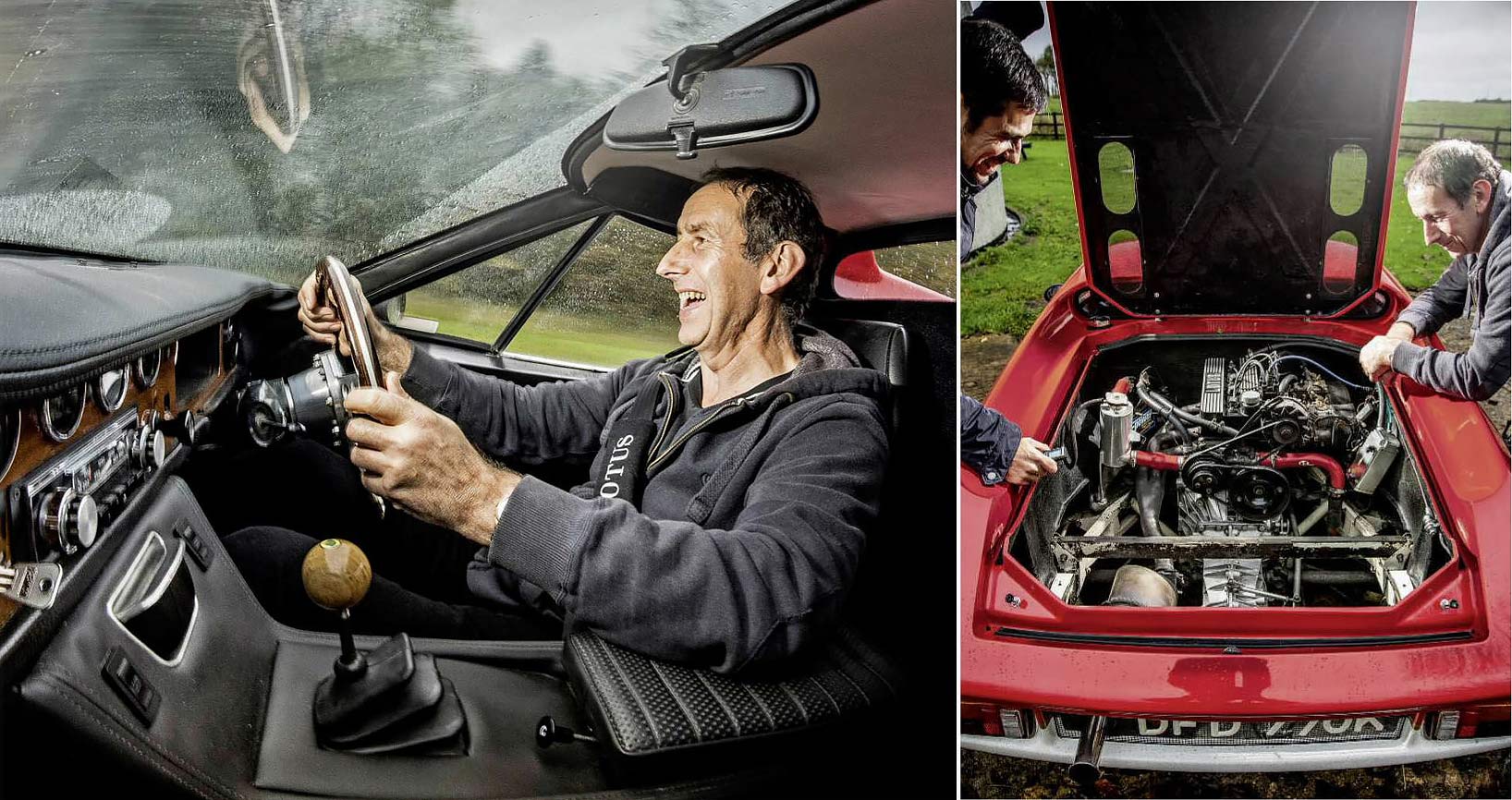
Bored-out cross-flow engine ups power from the original S2’s 82bhp to 120bhp.
As I fold myself into the driver’s seat it becomes clear that the old adage about having to be well under 6ft in order to fit into a Europa is a myth – it’s tight but still reasonably comfortable. And Ian is right about the driving position – it’s near-horizontal and reminiscent of a Formula Ford racer. The view out front is fine but a combination of a tiny rear screen and twin buttresses mean rear visibility is limited. The cabin itself is a period-perfect combination of wood, chrome and black vinyl.
With more than half of the Europa’s bulk in the rear, the front end initially feels far too light. The rack-and-pinion steering is full of trademark Lotus feel but the manner in which it tiptoes across the road is disconcerting. Ian was spot-on about the power, though; like many sporting four-cylinder engines of the time, the Renault engine – a bored-out 1647cc crossflow rather than original 1470cc Renault 16 unit – thrives on revs. Get the power down and you benefit instantly from its 720kg kerbweight – the 0-60mph sprint takes just over seven seconds. It’s quick then, but not Elan quick.
I approach a roundabout warily – all the ingredients here are wrong, from the pouring rain to the Europa’s mid-engined layout, semi-slick tyres and over-light front end. That, and the fact that an earlier glance under the front bonnet lid revealed that we’re basically the front crumple zone. Easy does it, then – but the Europa handles it all with aplomb. I take the next one a little faster but once again the Lotus dispatches it with all the effortlessness of Darcey Bussell in her dazzling prime. Its low centre of gravity lends it an inherent snake-hipped balance – you just have to trust it.
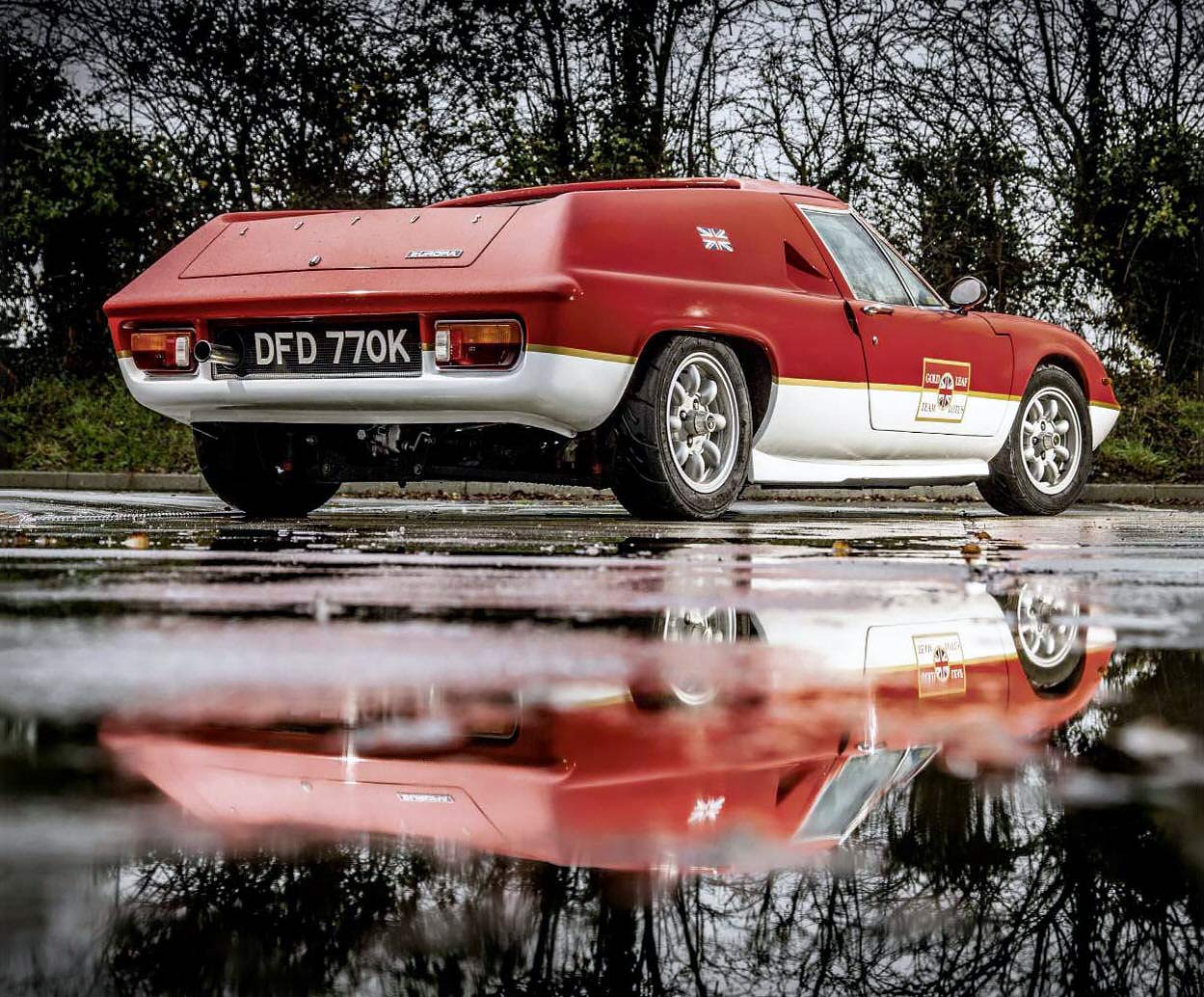
Opinion-polarising styling was honed by John Frayling, who also designed the Elan coupé and Elite, and later the Lola T70 MkIIIB.
The weather is even worse at Cromer so we head back towards Holt. The 20-minute drive is an object lesson in concentration rather than unfettered driving joy but not once does the Europa feel skittish. We pull up outside Greenside Cars and are met by an expectant James. ‘How was it?’ he asks. ‘I wasn’t expecting a great deal from it, if I’m honest,’ Ian replies. ‘I thought it’d be much harder to drive and much slower and noisier than my MR2. But I like it much more than I thought I would – it exceeded all my expectations. It’s just a pity that the weather meant I couldn’t give it the full beans like I really wanted to.
‘I’ve driven several cars that transform completely once you get to that final 10 per cent and I suspect this may be the same. That could be a key area where it trumps my Toyota.’
Period road tests of the car, such as the one Road & Track published in May 1970, certainly suggest that this might be the case. It praised its racing car responses stating, ‘It corners very hard and really excels… the transition to oversteer is so gradual and the steering so direct that you almost get a sense of slow motion.’
Ian admits that he wanted to see what the modified engine was capable of. ‘Sadly, it didn’t live up to the dream. ‘If I’m honest, the lack of power is a dealbreaker for me. I’d have to change the engine and if I were going to all that trouble I suspect the Lotus Twin Cam wouldn’t be enough. It may sound heretical but I’d probably go for a modern engine with at least 180bhp. Still, I couldn’t open it up as much as I would have liked today so I may be misjudging it.’
So has the experience been a damp squib? ‘Far from it – it’s simply reinforced what I like. This Europa has everything I want from a car except the outright go. If its power output were closer to the Cosworth-engined Type 47 racer’s 165bhp, it might be a different story.’
Thanks to: James Henderson (greensidecars. com, 01263 713362), RichardWinter (banks-europa.co.uk, 01704 227059), Paul Clugston (uksportscars.co.uk, 01227 728190)
‘The low centre of gravity lends it an inherent snake-hipped balance – you just have to trust it’
THE EVOLUTION
1966 Lotus Europa S1
Colin Chapman’s afordable sports car for the mainland European market – as the name suggested – was one of the first mid-engined production cars. Its ultra-low glassfibre body was bonded directly to a steel backbone-type chassis and it was powered by a Renault 16 drivetrain, turned around and mounted longitudinally amidships.
Chapman designed the bodywork, and John Frayling refined it in the wind tunnel. Ron Hickman did the chassis. It was praised in period for its sublime handling and precision helm controls but all S1s were exported.
Lotus Europa S1 (Type 46) ‘12.1966–04.1968
1966 Lotus Europa TYPE 47
Powered by a 165bhp Cosworth-Ford twin-cam engine, the Type 47 racers had owners of standard road cars drooling. They had a new magnesium Hewland FT 200 gearbox and Tecalemit-Jackson fuel injection. Type 47A introduced a lift-of body by Specialist Bodies of Huntingdon, and a John Player-sponsored Gold Leaf colour scheme and a 47A body went on to form the basis for the GKN/Vandervell V8 one-of (see p12). Later Type 62 resembled the Europa, but had a completely different spaceframe-type construction.
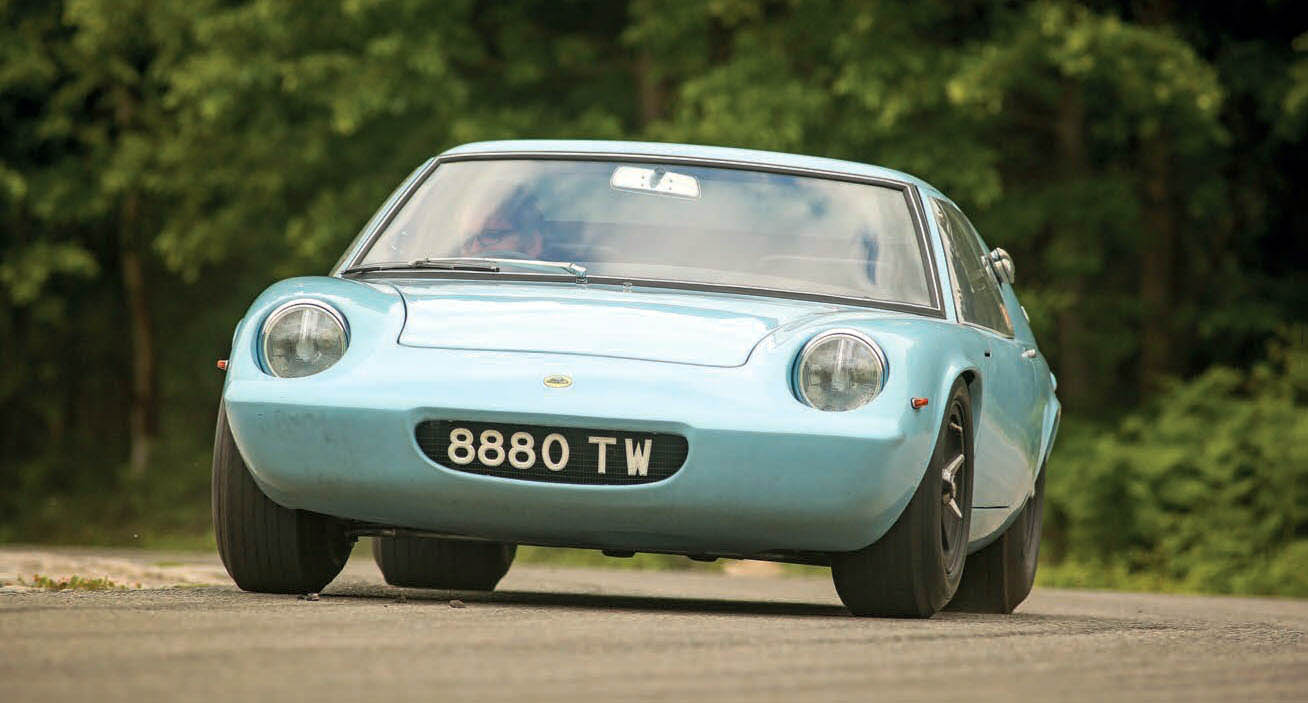
1968/1969 Lotus Europa S2 AND FEDERAL SPEC
More refined S2 gained a bolt-on body/chassis arrangement, electric windows, adjustable seats and an improved interior. It was available in the UK from ’1969. Larger 1565cc Renault crossflow engine for the Federal spec North American market Europa; similar power output of 80bhp thanks to emissions regulations but more tuneable – simply add twin carburettors – than the earlier 1470cc engine. Bodyshell tweaks included a raised front wing line and reprofiled headlamps.
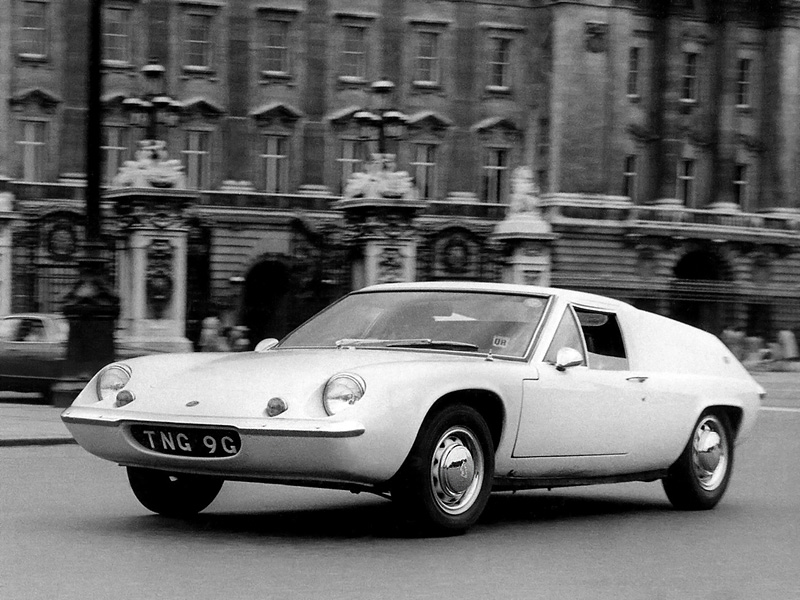
Lotus Europa S2 (Type 54) ‘04.1968–1975
1971/1972 Lotus Europa TWIN CAM AND SPECIAL
New 1558cc Lotus-Ford twin-cam engine – still mated to the standard four-speed Renault gearbox but now with twin Weber 40 carburettors as standard, which increased power to 105bhp with 0-60mph covered in a tidy 7.8 seconds. Smaller rear buttresses improved rear vision and improved aesthetics. Lowered floor improved interior space.’1972 Special had 126bhp big valve version of the twin-cam engine and optional five-speed gearbox knocking a further 0.8sec of the 0-60mph sprint.

Lotus Europa Special (Type 74) ‘1973
THE HOT EUROPAS
GKN 47D AND BANKS 47R/62S
Richard Winter reveals the truth about the Rover V8-engined car.
In 1969 automotive component company GKN/Vandervell commissioned the idea of a scorching Lotus Europa road car with performance more akin to the Type 47 racecar. The idea was to showcase the company’s wares and provide a test bed for future component development.
‘There’s an awful lot of hearsay regarding the GKN V8,’ says Richard Winter of Lancashire-based Europa Engineering. ‘I met the US owner who was restoring it about ten years ago. It started life as a 47 with a longer bodyshell and a chassis lengthened by five inches to accommodate the Rover V8 engine. It needed surprisingly little extra strengthening.’
The January 10 1969 issue of Autosport stated that the GKN Europa V8 – designated 47D – produced 195bhp through a twin-plate clutch and a five-speed ZF Formula One gearbox – though later period road tests of the finished car state that it produced just 184bhp. The upgraded cooling system consisted of two ducted crossflow radiators and twin thermostatic fans mounted in the nose.

One-of GKN Europa had longer body and chassis to accommodate the Rover V8.
It received a substantial upgrade in 1972 – engine capacity was increased to 4.4 litres and a new Engle crankshaft, higher 11.5:1 compression ratio and special manifolds combined with four twin-choke Weber 45DCOE carburettors resulted in a reported 296bhp.
Quoted top speeds vary from 163mph to 180mph but in September 1975 Autocar confirmed it accelerated from 0-100mph in just 11.1 seconds – a feat no other period rival could come close to matching.
The GKN 47D blazed a trail as the Europa’s ultimate roadgoing incarnation. ‘It attracted a lot of interest,’ says Winter, ‘but I dismissed it at the time because it was so far away from what Lotus road cars really were – four-cylinder screamers. It seemed to me to be more of a rich man’s exercise than anything else.’
For him it lacks the charisma of the Type 62 – a one-off prototype race car test bed for the new 2.0-litre four-cylinder LV220 engine that would go on to power the Esprit and Excel. ‘It spent several months at Europa Engineering and I drove it extensively,’ he says. ‘It really is an awesome piece of kit.’
It was the 62 that inspired the Banks Europas. ‘I was dealing with the Type 62 through my business and I owned a five-speed Special that I loved to death, although I soon tired of its fragility.’
Winter built himself a 62 on an Esprit chassis shortened by five inches. It was so well received on various endurance rallies that Europa Engineering started to build its own bespoke cars.
Europa Engineering builds a custom chassis – a spaceframe or a Lotus design – depending on the customer’s choice of engine. ‘The Vauxhall DOHC 16v is a popular choice because it’s very reliable and good for 200bhp,’ says Winter. ‘But we’ve built V8s, transverse V6s, Mazda rotaries and I’m currently constructing one powered by a gas turbine.’
‘An upgrade in 1972 gave the GKN 47D increased engine capacity and a reported 296bhp’
TECHNICAL DATA 1969 LOTUS EUROPA S2
Engine 1647cc, four-cylinder, ohv, twin Weber 40 carburettors
Power and torque 120bhp @ 6500rpm (est); 113lb ft @ 5000rpm (est)
Transmission Five-speed manual, rear-wheel drive
Brakes Servo-assisted discs all round
Suspension Front: independent, wishbones, coil springs, anti-roll bar. Rear: independent, single trailing radius arm, coil springs, dampers
Steering Rack and pinion
Weight 720kg (1588lb)
Performance Top speed: 120mph (est); 0-60mph: 7.2sec (est)
Fuel consumption 30mpg
Cost new £1849 (1972 Special)
Values now £7500-£20,000
{module Lotus Europa}





